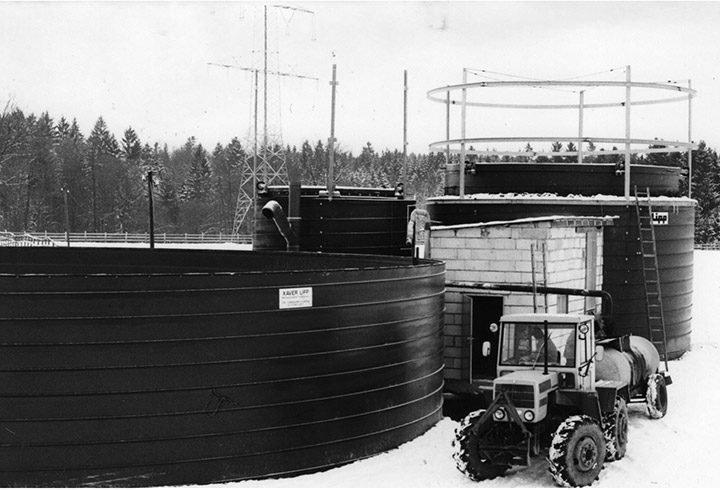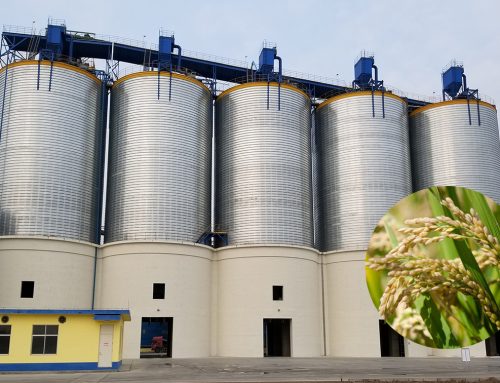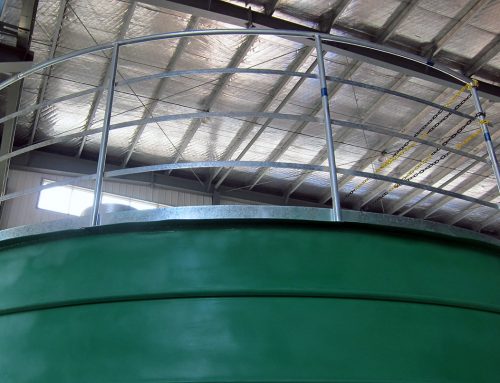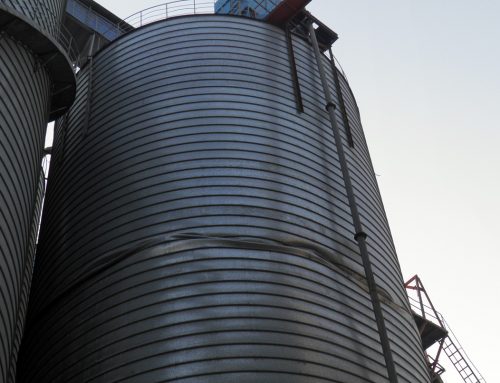The steel silo was invented in the early 20th century. At first, it was used in the agriculture for grain storage. By the end of the 1970s, steel silos, as grain storage warehouses, had almost replaced any other types of granaries in western countries.
With the continuous development and maturity of steel silo construction technology, steel silos have gradually become available for storing granular, powdery and liquid materials, and have been widely used in metallurgy, building materials, petroleum, chemical, light industry, brewing, medicine, mining, environmental protection and other fields.
The steel silos can be divided into four forms according to the construction technology. They are riveted steel silo, welded steel silo, assembly steel silo, and spiral steel silo.
The riveted steel silo is riveted with steel plates of 6 to 12 mm. Although the steel silo constructed using this technique is very strong, the construction process is laborious and time consuming, and it has been totally abandoned nowadays.
With the advancement of welding technology, people began to weld steel into steel silos with 4 to 12 mm steel plates. The welded steel silos are very airtight and can be built higher because their thick silo walls. Their service life is also relatively long, can reach 50 to 80 years as long as they are well maintained.
In the mid-1950s, in order to meet the needs of bulk grain transportation, people started to store bulk grain in steel silos assembled from thin-walled steel plates in farms and pastures. The most common type is bolt-mounted corrugated steel silo. These steel silos are welcomed by farmers and herdsmen because of their light weight, convenient assembly, demolition and low price.
The spiral steel silo was invented in 1969 by a German named Lipp. He built the spiral double-layered steel silo in Germany using the seaming equipment. This type of steel silo has a higher level of mechanization, better quality and better performance.
Steel Silo Development in China
The development of China’s steel silo technology was late started. In 1980s, China’s steel silo technology was introduced from western countries, mainly the U.S. and Germany.
The galvanized corrugated sheet-mounted steel silos Honghe Farm of Heilongjiang Province imported from the United States in 1998 was the earliest modern steel silo group in China. In the same year, Heilongjiang Qing’an Iron and Steel Plant produced the first grain steel silo in China by surveying the US steel silo of Honghe Farm.
In 1984, Anyang City, Henan Province introduced Lipp steel silo technology and the silo construction equipment from Germany, and started to produce Lipp steel silo. In April 1985, the first Lipp-style steel silo was built in China. In the decades since then, through the continuous digestion, absorption and innovation of technology, the steel silo manufacturing industry has developed rapidly, and the use of steel silos in various industries has become more and more extensive.
Steel Silo Advantages
A steel silo is composed of a silo roof, a silo body, and a cone bucket. It generally has a complete supporting system, including an entry and exit system, a cleaning system, a drying system, a material level system, a temperature measurement system, a ventilation fumigation system, an electronic control system, a complete set of automated operating system, and metering and packaging systems.
From the entry of materials into the warehouse, each link has an advanced and reliable working system, which makes the storage and management of materials more scientific and rational, and effectively reduces the operating costs of users. These are factors that make steel silos so popular today.




